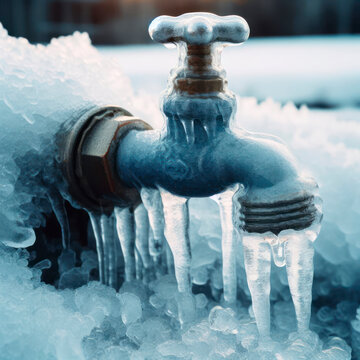Protecting Against Frozen Pipes: Effective Strategies for Winter
Protecting Against Frozen Pipes: Effective Strategies for Winter
Blog Article
Are you currently on the lookout for additional info about Prevent Frozen Pipes ?

Cold weather can wreak havoc on your plumbing, particularly by freezing pipelines. Below's just how to avoid it from occurring and what to do if it does.
Introduction
As temperatures decline, the threat of icy pipes increases, possibly causing costly repairs and water damages. Understanding how to stop frozen pipelines is vital for house owners in cold environments.
Understanding Icy Pipes
What creates pipes to ice up?
Pipelines freeze when exposed to temperature levels below 32 ° F (0 ° C) for extended durations. As water inside the pipes freezes, it broadens, taxing the pipe walls and potentially causing them to break.
Dangers and problems
Frozen pipes can bring about supply of water disturbances, residential property damages, and expensive repair services. Ruptured pipelines can flooding homes and cause comprehensive structural damage.
Indications of Frozen Piping
Identifying frozen pipes early can prevent them from bursting.
How to determine frozen pipes
Look for decreased water flow from taps, uncommon smells or sounds from pipes, and visible frost on exposed pipes.
Avoidance Tips
Protecting susceptible pipes
Wrap pipelines in insulation sleeves or utilize heat tape to safeguard them from freezing temperatures. Focus on pipelines in unheated or outside locations of the home.
Heating techniques
Keep interior spaces appropriately heated, especially areas with plumbing. Open cabinet doors to allow cozy air to distribute around pipes under sinks.
Protecting Exterior Plumbing
Garden hoses and outside faucets
Detach and drain garden tubes before wintertime. Install frost-proof faucets or cover exterior faucets with protected caps.
What to Do If Your Pipelines Freeze
Immediate actions to take
If you presume icy pipes, maintain taps open to soothe pressure as the ice thaws. Make use of a hairdryer or towels taken in warm water to thaw pipes slowly.
Long-Term Solutions
Structural modifications
Take into consideration rerouting pipes far from exterior walls or unheated locations. Include extra insulation to attics, cellars, and crawl spaces.
Upgrading insulation
Purchase high-quality insulation for pipes, attic rooms, and wall surfaces. Correct insulation aids maintain consistent temperature levels and decreases the risk of icy pipes.
Final thought
Stopping frozen pipes requires aggressive measures and quick responses. By understanding the causes, indicators, and safety nets, house owners can protect their plumbing during winter.
6 Proven Ways to Prevent Frozen Pipes and Protect Your Home
Disconnect and Drain Garden Hoses
Before winter arrives, start by disconnecting your garden hoses and draining any remaining water. Close the shut-off valves that supply outdoor hose bibs and leave the outdoor faucet open to allow any residual water to drain. For extra protection, consider using faucet covers throughout the colder months. It’s also important to drain water from any sprinkler supply lines following the manufacturer’s directions.
Insulate Exposed Pipes
Insulating your pipes is an effective way to prevent freezing. Pipe insulation is readily available at home improvement stores and is relatively inexpensive. Pay close attention to pipes in unheated areas such as the attic, basement, crawl spaces, or garage. Apply foam insulation generously to create a buffer against the cold. You can also wrap your pipes in heat tape or thermostat-controlled heat cables for added warmth.
Seal Air Leaks
Inspect your home for any cracks or openings that could let in cold air. Seal any holes around the piping in interior or exterior walls, as well as the sill plates where your home rests on its foundation. Additionally, make sure to keep your garage door closed unless you’re entering or exiting. Leaving it open creates a significant air leak that can lead to frozen pipes.
Allow Warm Air Circulation
During cold snaps, it’s essential to allow warm air to circulate evenly throughout your home. Leave interior doors ajar to promote better airflow. Open kitchen and bathroom cabinets to help distribute heat consistently around the rooms. If you have small children or pets, be sure to remove any household chemicals or potentially harmful cleaners from open cabinets for safety.
Let Faucets Drip
A small trickle of water can make a big difference in preventing ice formation inside your pipes. When temperatures drop significantly, start a drip of water from all faucets served by exposed pipes. This continuous flow helps prevent the water from freezing. Additionally, running a few faucets slightly can relieve pressure inside the pipes, reducing the chances of a rupture if the water inside does freeze.
https://choateshvac.com/6-proven-ways-to-prevent-frozen-pipes-and-protect-your-home/

Do you appreciate reading about Winter Plumbing Precautions: Preventing Frozen Pipes? Leave a short review further down. We would be glad to know your ideas about this write up. We hope to see you back again soon. Don't hesitate to set aside a second to share this entry if you enjoyed it. Many thanks for taking the time to read it.
Get A Free Estimate Report this page